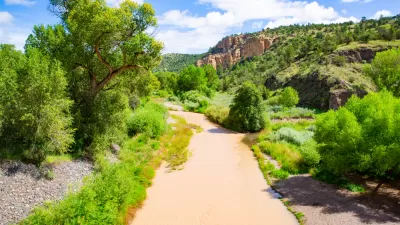Heavy flooding are expected to strain the Mississippi and Missouri rivers in Spring 2020, just as resources are stretched thin by the coronavirus.
The 2020 list of America's Most Endangered Rivers, published annually by American Rivers, includes sections of two of the most environmentally, geographically, economically, historically, and culturally significant rivers in the United States—the Mississippi and the Missouri.
A year after catastrophic following up and down the Mississippi River watershed, projections for flooding along the two watershed look dire again. In 2020 that risk is combined with the added public health threat of the coronavirus, influencing the selections on the list this year. Here's the complete list, with links to detailed pages for each:
- Upper Mississippi River
- Lower Missouri River
- Big Sunflower River, Mississippi
- Puyallup River, Washington
- South Fork Salmon River, Idaho
- Menominee River, Michigan and Wisconsin
- Rapid Creek, South Dakota
- Okefenoke Swamp and St. Marys River, Georgia and Florida
- Ocklawaha River, Florida
- Lower Youghiogheny River, Pennsylvania
While climate change and flooding are the risks mentioned for the Mississippi and Missouri rivers, mining is listed as the threat for the plurality of rivers listed here.
American Rivers is a national advocacy organization devoted to the protection, restoration, and conservation of the country's watersheds. Planetizen shared news of previous Endangered Rivers lists in 2019, 2018, and 2015. The mainstream media also picked up coverage of the 2020 list, including with the following articles:
- Upper Mississippi River named 'most endangered river' in the United States (Chicago Tribune)
- Upper Mississippi River is the nation's 'most endangered river' of 2020 (USA Today)
- Portions of Mississippi and Missouri Rivers Are Most Endangered in U.S. (Scientific American)
FULL STORY: America's MostEndangered Rivers®of 2020

Maui's Vacation Rental Debate Turns Ugly
Verbal attacks, misinformation campaigns and fistfights plague a high-stakes debate to convert thousands of vacation rentals into long-term housing.

Planetizen Federal Action Tracker
A weekly monitor of how Trump’s orders and actions are impacting planners and planning in America.

In Urban Planning, AI Prompting Could be the New Design Thinking
Creativity has long been key to great urban design. What if we see AI as our new creative partner?

Pedestrian Deaths Drop, Remain Twice as High as in 2009
Fatalities declined by 4 percent in 2024, but the U.S. is still nowhere close to ‘Vision Zero.’

King County Supportive Housing Program Offers Hope for Unhoused Residents
The county is taking a ‘Housing First’ approach that prioritizes getting people into housing, then offering wraparound supportive services.

Researchers Use AI to Get Clearer Picture of US Housing
Analysts are using artificial intelligence to supercharge their research by allowing them to comb through data faster. Though these AI tools can be error prone, they save time and housing researchers are optimistic about the future.
Urban Design for Planners 1: Software Tools
This six-course series explores essential urban design concepts using open source software and equips planners with the tools they need to participate fully in the urban design process.
Planning for Universal Design
Learn the tools for implementing Universal Design in planning regulations.
planning NEXT
Appalachian Highlands Housing Partners
Mpact (founded as Rail~Volution)
City of Camden Redevelopment Agency
City of Astoria
City of Portland
City of Laramie





























